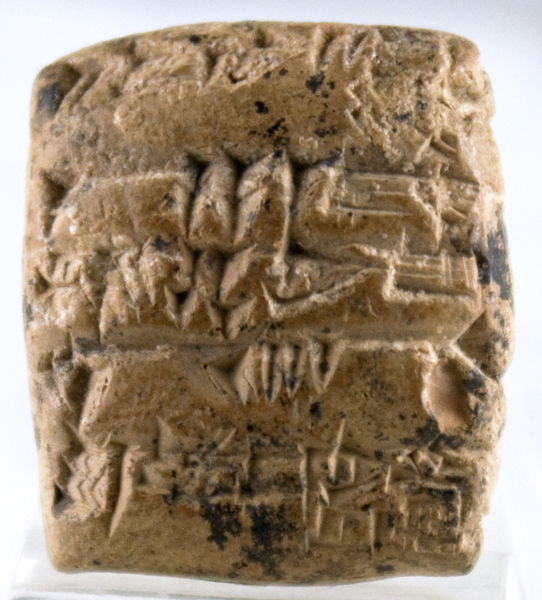In special collections, visitors often ask us, “What’s your most expensive item?” Or sometimes: “What’s the oldest thing you have?”
In late November, we acquired our newest, oldest thing: a baked clay tablet that originated in ancient Mesopotamia (current-day Iraq), from roughly 2,000 BCE. This small tablet (measuring just about 1 inch x 1 inch and pictured here) is incised with cuneiform script, considered to be one of the earliest forms of writing.

With the help of Middlebury alum Seth Richardson, Class of 1990, a historian of the ancient Near East at the University of Chicago, we’re learning more about our new acquisition. Likely in British and American hands since the early 20th century, our tablet is essentially a beer coupon. That’s right. Based only on preliminary examination, Dr. Richardson translated the first line: “3 liters of first-rate beer.”
And as it turns out, the Western tradition of beer brewing began in Mesopotamia between 3500 – 3100 BCE. How do we know? Largely from cuneiform tablets like ours, which contain detailed records around beer production, the delivery of raw materials (barley, yeast, bread, flour), and the trading of beer products. Like apple cider production in colonial New England, ancient Mesopotamians lacked clean water, but had an abundance of grains and the know-how needed to ferment them. And they had the earliest known written alphabet to boot.
Funds for the purchase of this item were gifted by Jeri Bapasola, French School, 1978.
References
“Beer in the Ancient World.” Ancient History Encyclopedia. Accessed December 3, 2015.